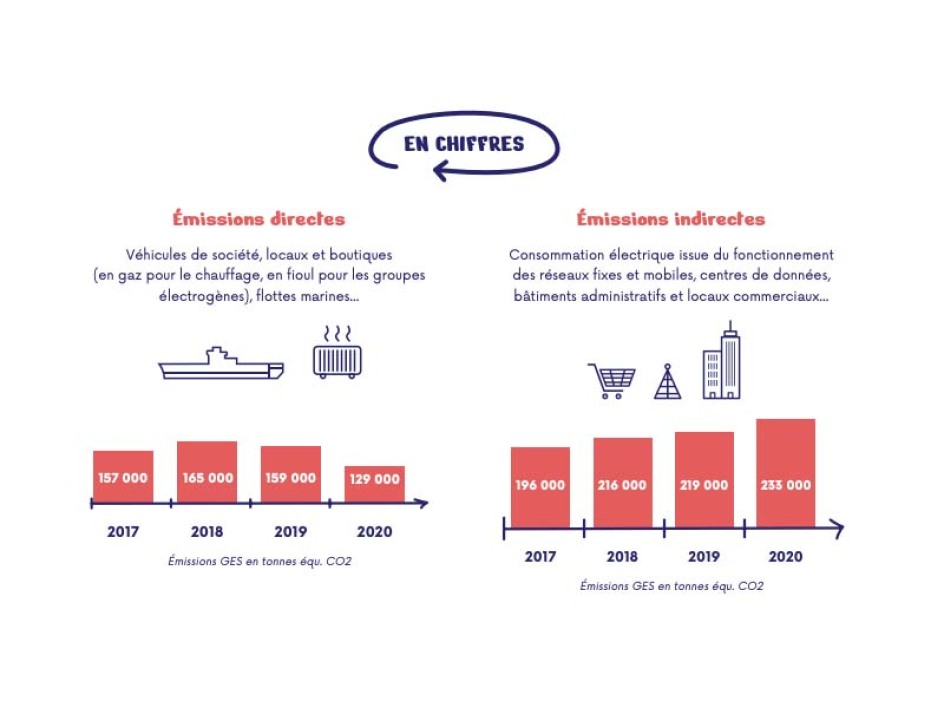Since the end of 2021, Arcep has been tasked with collecting indicators of the telecom sector’s environmental footprint. The authority has just published its first annual survey based on data collected from the four largest operators.
Carbon emissions to watch
At first glance, there is good news because they have succeeded in reducing carbon emissions*. The four major players released 362,000 tons of CO2e in 2020, down for the second year in a row, and down 4% in one year in 2020. However, these numbers should be taken with extreme caution.
The pandemic has led to a significant reduction in travel and therefore vehicle-related emissions due to the temporary reduction in activity. And so this could start to rise again, even if operators can improve the energy efficiency of their buildings since 2019.
Above all, at the same time, emissions from electricity consumption are increasing. This is due to the uses that have exploded since the health crisis and the spread of networks that have intensified. And the trend is not about to reverse. Therefore, we will have to monitor this indicator with the greatest caution in the medium term.
* For details on the range considered, see the box at the bottom of the article.

Networks consume more and more
Admittedly, grid energy consumption was less than 1% of France’s total consumption in 2020. However, it did not stop increasing between 2016 and 2020 and now reaches 3800 GWh. It mainly corresponds to the use of electricity and 85% comes from the fixed and mobile access networks, that is, the last part that is used to connect subscribers to the operator’s network. Aggregate networks and core networks only pump out 15% of the total.
If we look at this energy consumption in detail, several lessons emerge depending on the technologies. Mobile network is the most greedy with 58% versus 27% for fixed local loops. This is due to the fact that there are more SIM cards in circulation than fixed subscriptions.
We now also know that copper access networks consumed, on average, about 35 kWh per subscription in 2020, compared to less than 10 kWh on fiber networks. Therefore, the transition from copper to optical fibers should reduce the power consumption of fixed networks.
Let us not forget, however, that turning off copper and diffusion of optical fibers will lead to additional greenhouse gas emissions, among other environmental impacts, as we already noted at the beginning of the article. Gaining consumption on one side can be associated with an increase in influence in other areas. So the environmental bill will not necessarily be reduced.
See also the video:
Make progress in retrofitting and recycling
The third indicator that Arcep monitors relates to cell phones, their sale, refurbishment and recycling. In 2020, the four major operators sold 155,000 refurbished phones, or 2% of their total mobile terminal sales. This figure rises to 13% nationwide. So they have progress in this area, especially with companies that are reluctant to invest in used equipment. The assortment of unused terminals also leaves something to be desired because 53% of them are still in the hands of their owners. The number of phones collected has decreased with the health crisis. We hope that this practice will increase again.
This survey is the first version that Arcep promises to enrich. Next time, data will be collected from other players such as data center manufacturers or operators.
Source:Arcep


“Devoted gamer. Webaholic. Infuriatingly humble social media trailblazer. Lifelong internet expert.”





